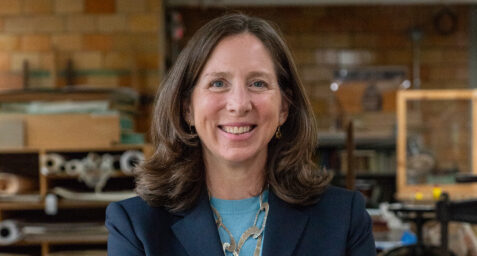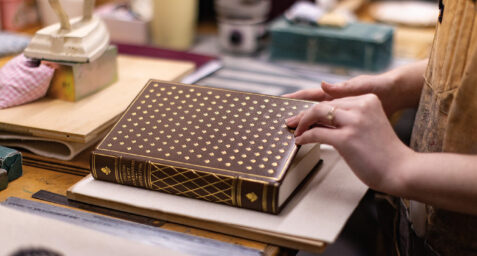In the Making: Nathan Abbe and Cooper Jonas
“Just like Strad used to do it.”
Nathan Abbe VM ’20 and Cooper Jonas VM ’20 are set to graduate this summer, once they finish up their final projects for the program: a violin for Nathan, and a cello for Cooper. Though not an ideal setup, as workspaces go, theirs is comfortable and efficient: violins hang from curtain rods in their “former” living room (now benchroom), a five gallon bucket lends a hand to cure varnish, and they have a makeshift desk courtesy of a vintage National Geographic collection.
In our recent interview, we learn how they’re adapting to the new now, while maintaining their productivity and health along the way.
Below is an excerpt from the conversation, edited for space and clarity.
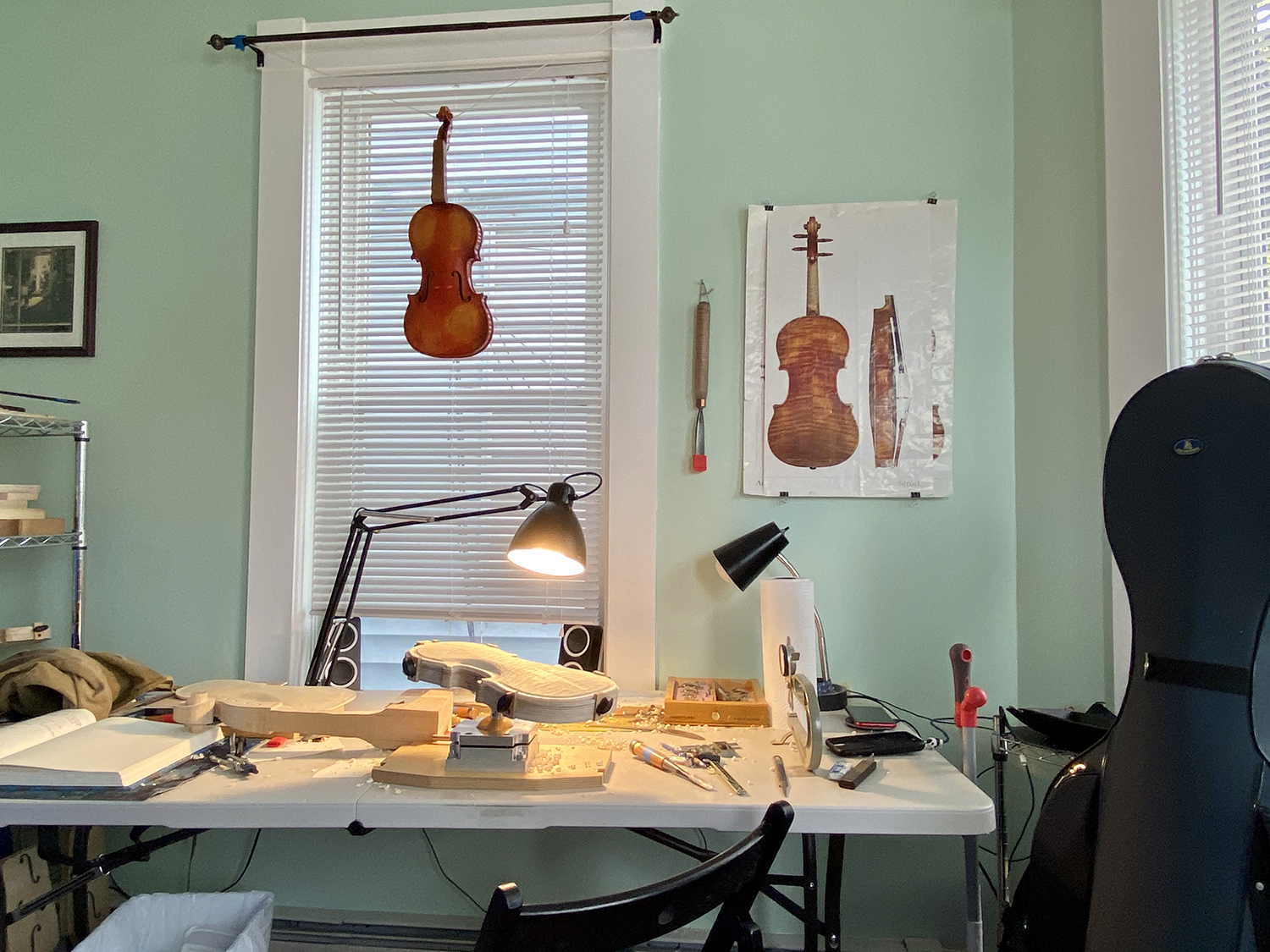
Nathan Abbe: Thank you. Yeah, we spend most of our time in here.
KO: So it’s working for you. And you’ve been able to be productive?
NA: Well, it’s one thing to say that you’re being productive, and it’s another to say that you’re producing the same quality that you would in the shop at school. There are certain things that we’re trying to work around, like not having a table—we don’t have a work bench that’s solid. Cooper’s bending ribs right now on a bending iron, which you have to clamp to a workbench.
Cooper Jonas: So, we have to pull ribs against that and it’ll pull the table along with it if it’s not heavy enough.
KO: [Haha] This sounds both frustrating and maybe hilarious.

CJ: Yeah, it’s pretty hilarious, I think because it’s such a minor deal. You can just position your body such that you kind of contort to bend the rib and have the table push against your legs. So, I can make it work.
KO: Nate, you’ve been working on the computer as well the bench – what is it you’re working on?
NA: We’re required to make the technical drawing of a violin. Usually it’s drawn out by hand. But with my background in architecture, I’ve elected to do it on the Rhino 3D drafting program. [Editor’s Note: NBSS will begin offering Rhino and other modeling software classes online this summer.]
KO: I find it fascinating that unlike many trades, your program makes drawings after the work is made. Why is that?
NA: You can get into some opinion on it. But from my experience, I’d say that the first instrument that you’re making, you don’t really know what you’re looking for in terms of fine curvature and the difference between what makes a Stradivari and the Guarneri look different. When you do the technical drawing, you want to basically create a drawing that is the essential aesthetic of a Strad instrument.
I think it’s a testament to the violin itself, because there’s such sculptural aesthetic value to it. You have to develop a feel for the curve. Creating the curve with your hands. Then also understand how that is derived from geometry, geometric proportions, and rational curves.
KO: Cooper, you started building a cello this semester. Were you about to bring it home?
CJ: Yeah. I’m currently working on arching, which is establishing the shape of the outside of the top and the back plate.
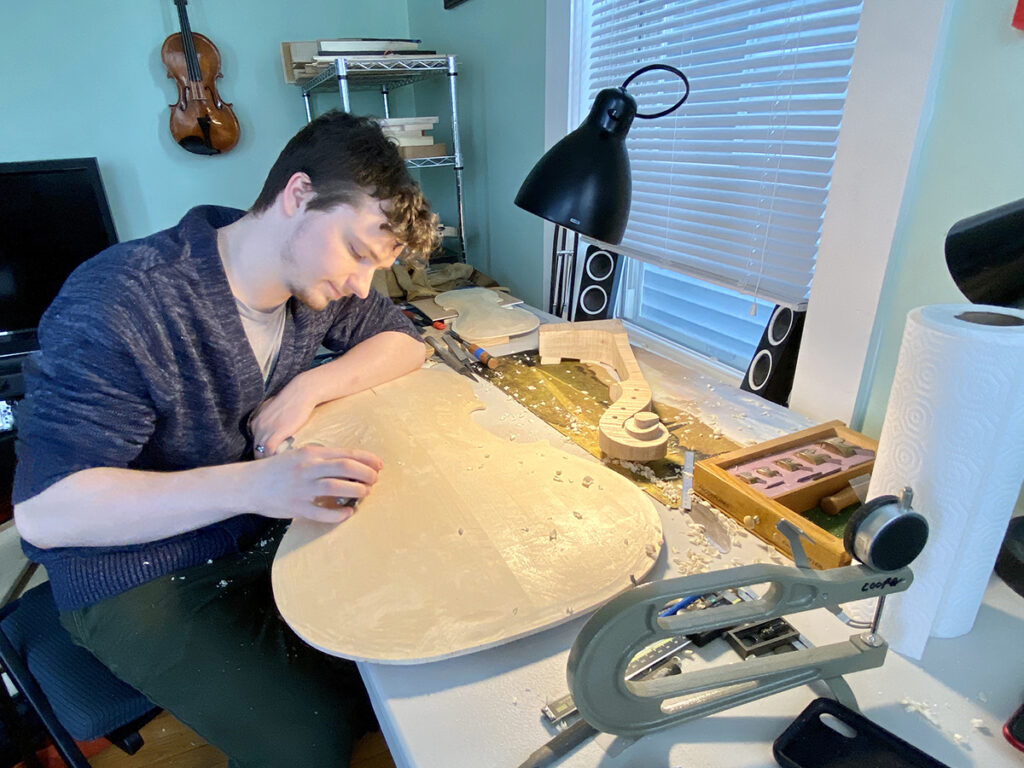
KO: How are you finding that possible in your home studio?
CJ: I haven’t started yet, but I’m going to try setting it up in the other room where there’s more open space on the floor. There’s this cork cradle that you can set the instrument in. I’m going to try to clamp the actual plate to the cradle and then the cello wood is heavy enough that if I push it up against a hard surface like a wall, it won’t really move. So, I can just work on it from there.
KO: On the floor, against the wall… Do what you’ve got to do, right?
CJ: Yeah. [laughs]
NA: Just like Strad used to do it!
[laughter]
KO: So it sounds like you’re making do at home. What if anything has changed about your schedule?
NA: It’s been a lot looser. You kind of have to take advantage of the time that we’re being awarded here to make sure you’re staying healthy and let your body go through naturally what it wants to do. We still try to maintain a general schedule of up by 9:00, start working, and have breakfast and that kind of thing. Just loosely remain productive throughout the day.
I find that lately I’ve been working off and on, but for a longer stretch of time than I would at school, where it’s more concentrated and you’re there to work and really get stuff done.
KO: So, you’re not having problems getting distracted?
NA: No, I wouldn’t say so. We’re being distracted by cooking! But we’re trying to be distracted by the things that will be more mentally productive. It’s nice to not to have the mental stress of rushing out into a crowded train, for example.
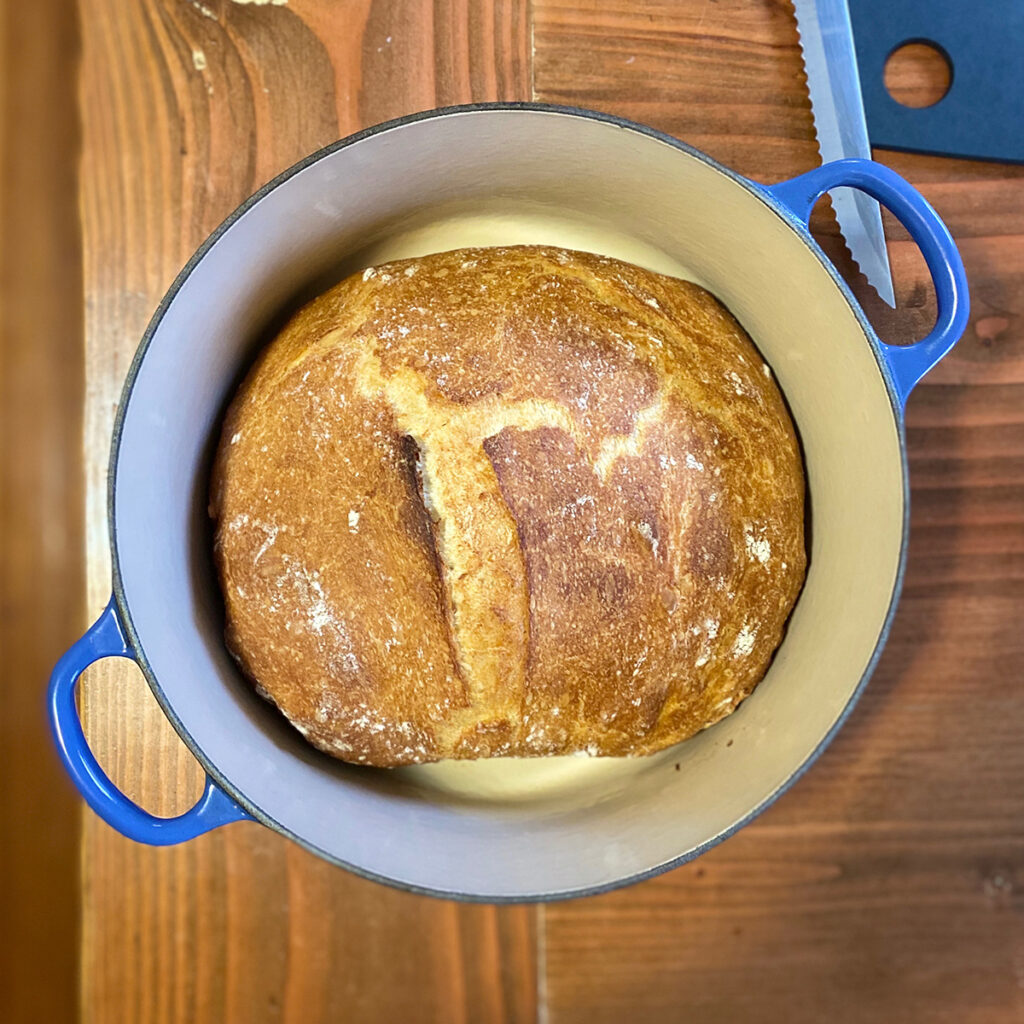
KO: What’s the one thing that you’re missing the most, not being in the school building?
NA: You miss the camaraderie of being together and making stuff in a facility that’s built for the specific purpose that you’re there for. And having in-person instruction where you can just be stuck on something dumb and look over your shoulder and say, “Hey, Roman, what do you think about this?” Now we text him pictures, which he’s been great about.
KO: Is there any sort of tool in particular that you find yourself using more at home then you were at your bench?
NA: The dutch oven.
[laughter]
CJ: For me, it’s definitely all of the clamps. At school we have everything set up so that we can just attach things to a workbench. Since we don’t have a workbench, it’s making things a lot harder.
NA: For me, it’s about having a chair that can change heights. Our workbenches are usually pretty high. So you can work comfortably from a standing position or from a tall stool or chair. Now we’re working on surfaces that are designed for sitting at and eating a meal. So, they don’t really translate really well to woodworking.
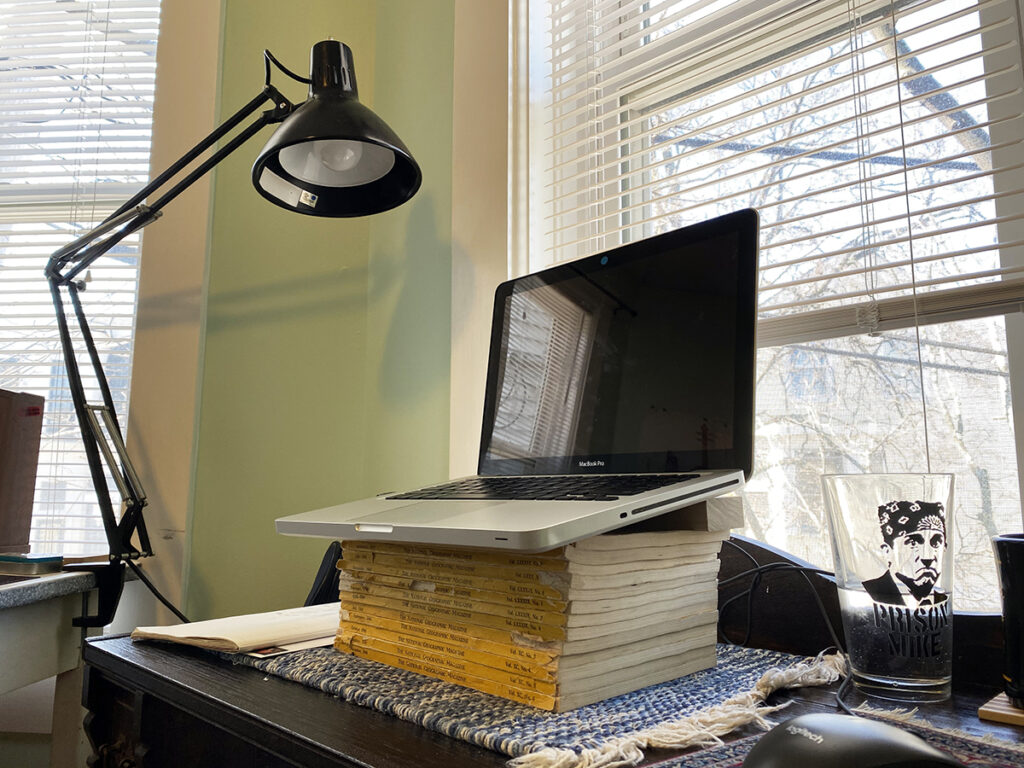
NA: I made a makeshift laptop riser out of a stack of National Geographics.
KO: But it only goes one way and stops. A non-adjustable laptop riser?
NA: Either add a magazine or remove a magazine!
KO: [Laughs] Yeah. How about music? What are you listening to to keep motivated?
CJ: We actually agree on a lot of musical genres. This past semester I’ve kind of taken it upon myself during class time to pick ambient music for the classroom that everyone can agree upon and people can still get work done. So, there’s lots of classical music.
I found that excerpts from video games work really well because the music is actually written and designed to be in the background. Movie scores work well too. There’s something really motivating behind video game and movie music that is difficult to find in other genres.
NA: Especially video games, they’re designed to be ambient but keep you going, and keep you playing the game.
KO: Fascinating! With that, I’ll let you get back to work. Nate & Cooper, thank you for sharing your time with us! Hope to see you both soon.
Next up: Take a tour of Nathan’s and Cooper’s home workshop.
“In the Making” is a series of video interviews with members of our community where we get insight to their lives and work. Learn more about the conversations, and view a full list of interviews on the series homepage.
